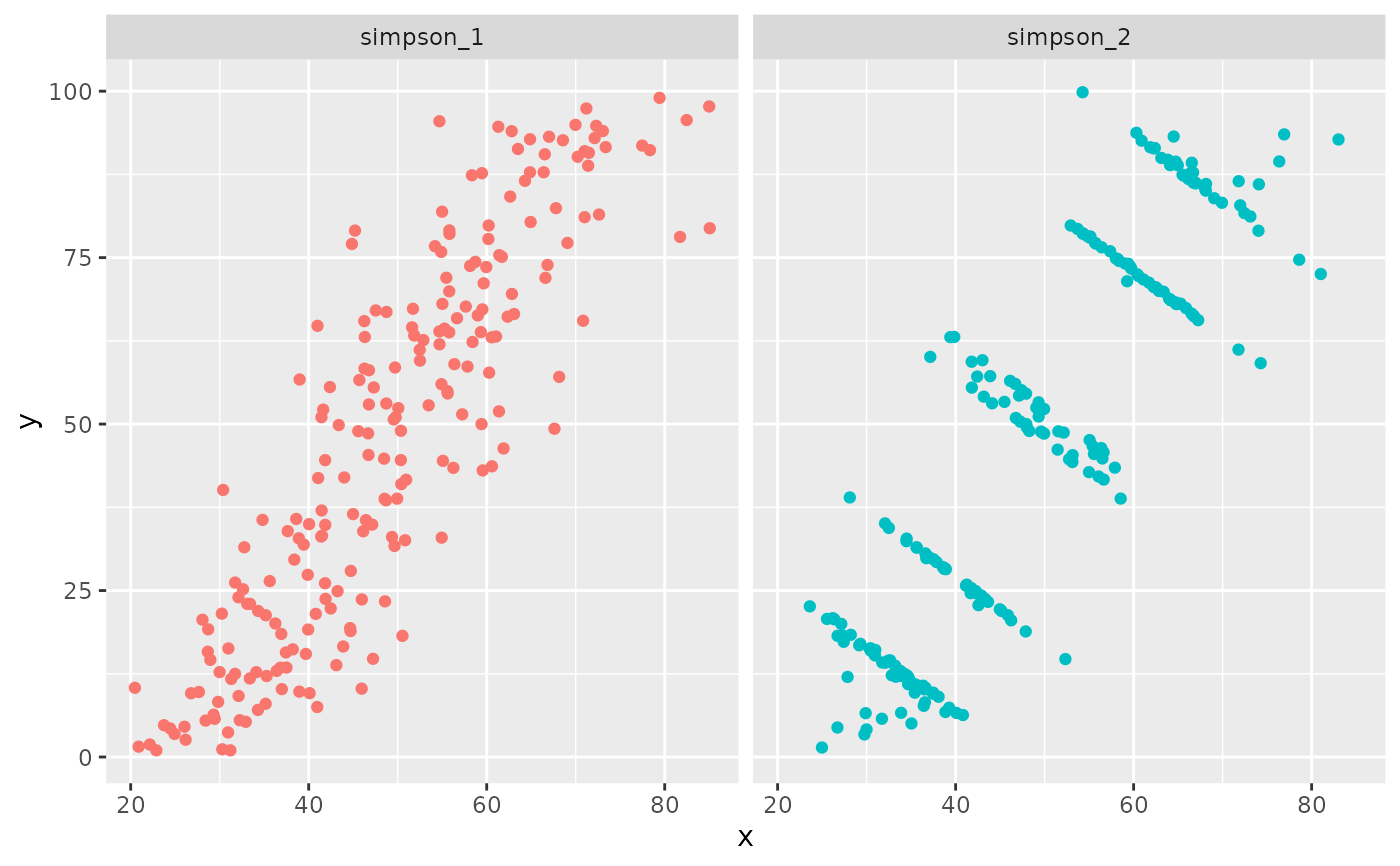A dataset demonstrating Simpson's Paradox with a strongly positively
correlated dataset (simpson_1)
and a dataset with the same positive correlation as simpson_1,
but where individual groups have a
strong negative correlation (simpson_2).
Format
A data frame with 444 rows and 3 variables:
dataset: indicates which of the two datasets the data are from,
simpson_1orsimpson_2x: x-values
y: y-values
References
Matejka, J., & Fitzmaurice, G. (2017). Same Stats, Different Graphs: Generating Datasets with Varied Appearance and Identical Statistics through Simulated Annealing. CHI 2017 Conference proceedings: ACM SIGCHI Conference on Human Factors in Computing Systems. Retrieved from https://www.research.autodesk.com/publications/same-stats-different-graphs/. #nolint
Examples
if (require(ggplot2)) {
ggplot(simpsons_paradox, aes(x = x, y = y, colour = dataset)) +
geom_point() +
theme(legend.position = "none") +
facet_wrap(~dataset, ncol = 3)
}
 # Base R Plots
state = par("mfrow")
par(mfrow = c(1, 2))
sets = unique(datasaurus_dozen$dataset)
for (i in 1:2) {
df = simpsons_paradox[simpsons_paradox$dataset == paste0("simpson_", i), ]
plot(df$x, df$y, pch = 16, xlab = "", ylab = "")
title(paste0("Simpson\'s Paradox ", i))
}
# Base R Plots
state = par("mfrow")
par(mfrow = c(1, 2))
sets = unique(datasaurus_dozen$dataset)
for (i in 1:2) {
df = simpsons_paradox[simpsons_paradox$dataset == paste0("simpson_", i), ]
plot(df$x, df$y, pch = 16, xlab = "", ylab = "")
title(paste0("Simpson\'s Paradox ", i))
}
 par(state)
#> Warning: argument 1 does not name a graphical parameter
#> NULL
par(state)
#> Warning: argument 1 does not name a graphical parameter
#> NULL
